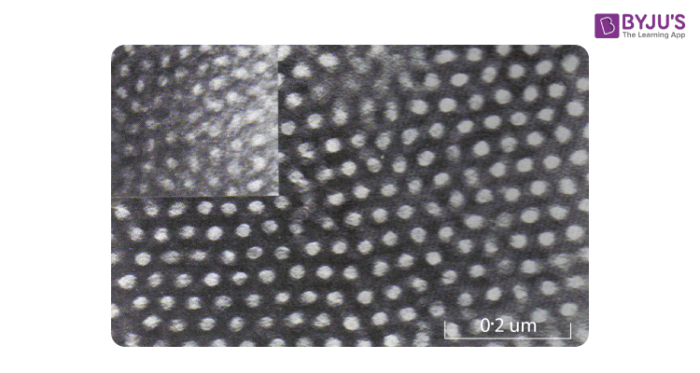Electrical properties of solids in solid state chemistry
Electrical properties of solids are measured in terms of conductivity. Conductivity may be defined as the ease with which electric current can pass through a given substance. All solids do not conduct electricity in equal amounts. Some of them have high conductivity, whereas some of them do not conduct electricity at all. On the basis of the conduction of electricity, solids can be broadly divided into three categories:

- Conductors: Conductors are the solids that allow easy passage of electric current through them. Metals are generally good conductors of electricity. Electrical conductivity in metals is due to the presence of mobile electrons. The conductivity of metals is of the order of 107(Ωm)-1. There is no gap between the conduction band and the valence band. Thus, electrons can easily flow from the valence band to the conduction band under the influence of an electric field, making them good conductors of electricity.
- Semiconductors: The gap between the conduction band and the valence band is very less; therefore whenever sufficient energy is provided to the electrons in a semiconductor, electrons jump from the valence band to the conduction band. The conductivity of the semiconductors increases with an increase in temperature, for semiconductors, it lies in between 10-6 to 10-4 (Ωm)-1. There are two types of semiconductors:
a) Intrinsic semiconductor:
When heat is provided to the semiconductors, sometimes they eject electrons from their position leaving a positive hole behind them. The semiconductors can now conduct electricity because, on the application of electric field, electrons will now move in one direction and the holes in the opposite direction. These types of materials are known as undoped or intrinsic semiconductors. Example: Silicon, Germanium.
b) Extrinsic semiconductor:
Silicon and germanium generally have a low conductivity in their pure state at room temperature. To increase the conductivity of the semiconductors small amount of impurity is added to the semiconductor (group 13 and group 15 elements). This process of adding the impurities to improve the conductivity of semiconductors is known as doping and the semiconductors are referred to as extrinsic semiconductors or doped semiconductors.
- Insulators: These materials do not conduct electricity. The band gap between the valence band and conduction band is very large. Even if a large amount of energy is provided to these solids, they do not conduct electricity. Example: Wood, plastics etc.
This was just a brief layout of electrical properties of solids and with their classification on the basis of electrical conductivity.
Recommended Videos
Solid State

Frequently Asked Questions – FAQs
Define the terms generation and recombination of charge carriers.
Recombination of carriers is defined as the process of removing the free electrons and the holes. A free electron and hole get removed when a free electron from the conduction band falls into a hole in the valence band.
State if the given statement is true or false: Semiconductor acts as an insulator in the presence of impurities.
Name the elements that make a good semiconductor.
What happens when a pentavalent impurity is added to a pure semiconductor?
Why Silicon is preferred over Germanium for semiconductor devices?
Silicon has a smaller collector cut off current than Germanium since it has fewer free electrons.
The peak inverse voltage of silicon diode is greater than the Germanium diode.
Economically Silicon is more feasible than Germanium.
To know more about the solids and their properties please download BYJU’S the learning app.

Comments